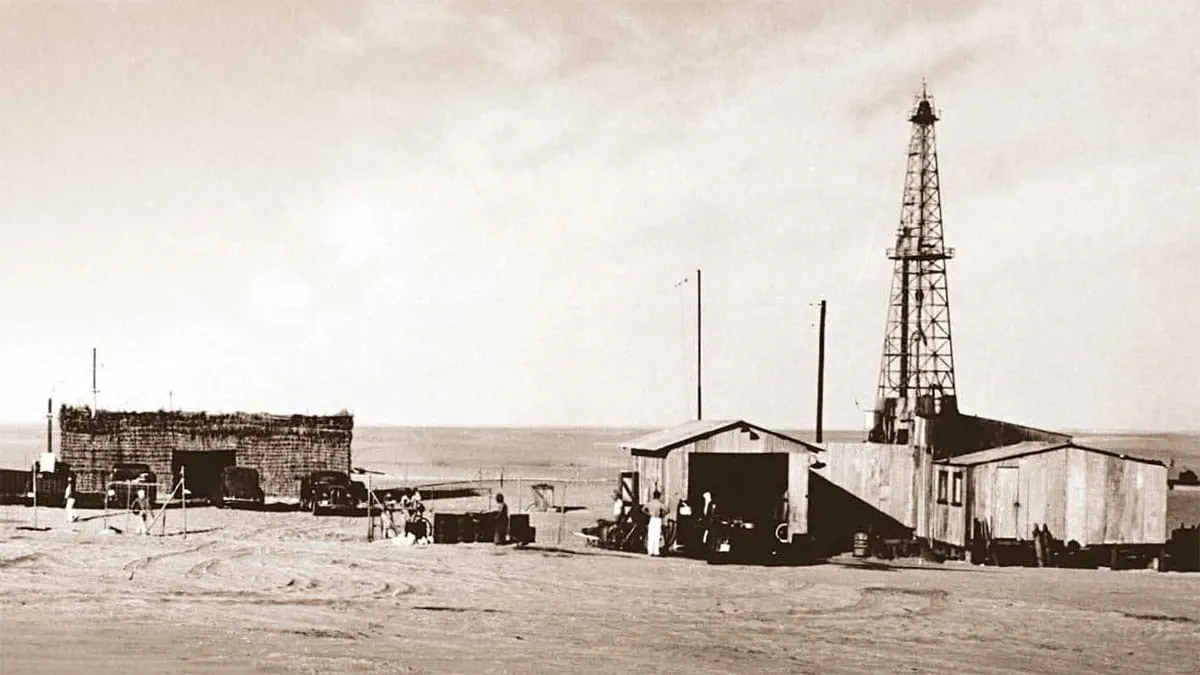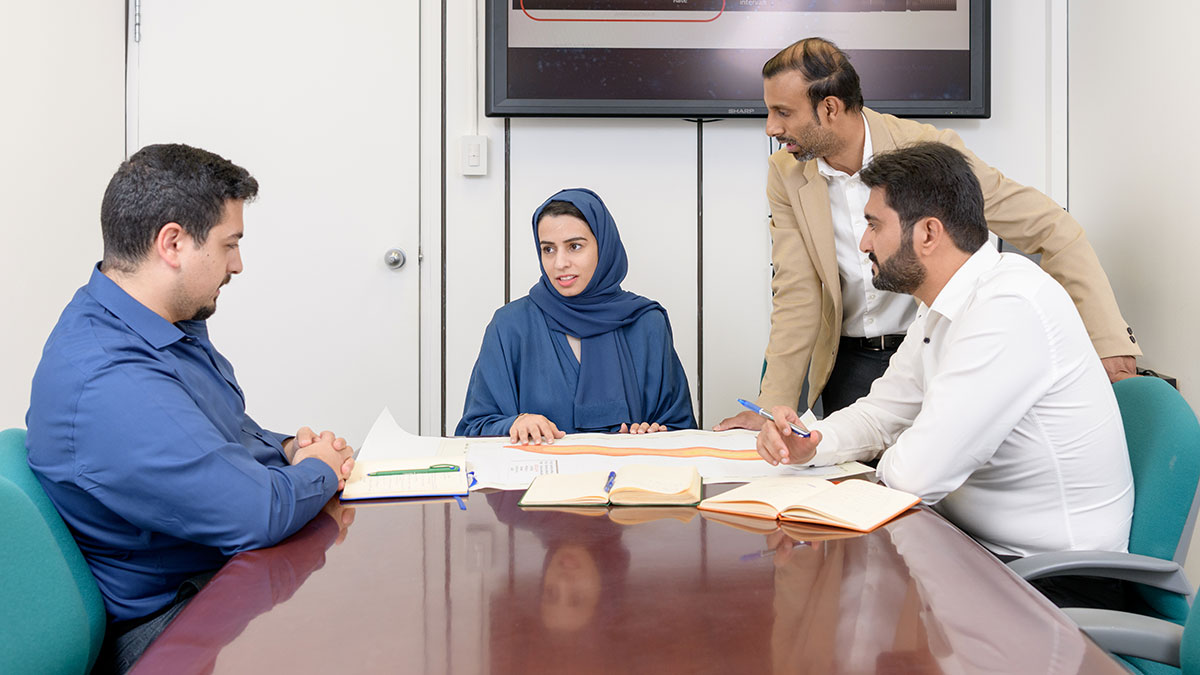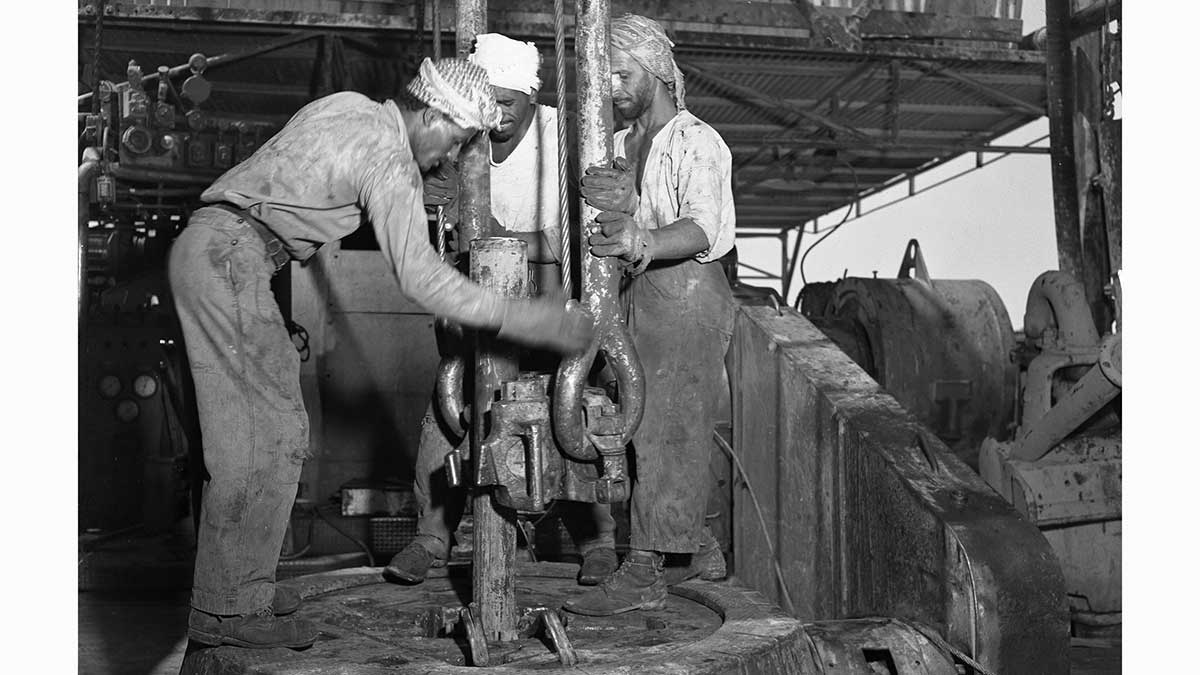A History of Production
The undying pulse of Abqaiq field

July 25, 2023
Wells No. 84 and 75, six decades, and up to 450 million barrels of oil later (excluding associated gas).
Perched for 62 years above baked sands on Saudi Arabia’s eastern desert horizon are two production warriors. At Abqaiq wells ABQQ-84 and ABQQ-75, located within the 50 kilometer-long Abqaiq oil field, we aim to maintain their record as the highest cumulative oil producers in Aramco.
The pair have reached around 235 and 215 million barrels of Arabian Extra Light production respectively (excluding associated gas) from the Arab-D reservoir, which has a thickness of more than 200 feet. Behind their refusal to bow to the erosions of time is Aramco’s careful management of its hundreds of oil and gas reservoirs, and the company’s commitment to infrastructure checking and maintenance.
Waleed A. Al-Mulhim, Petroleum Engineering and Development senior vice president, described the historic wells as a symbol of Aramco’s production excellence:
“Aramco puts impeccable care into managing its extensive portfolio of oil and gas reservoirs, and their associated infrastructure assets.
Our best-in-class production practices contribute toward the company being one of the world’s most reliable suppliers of lower upstream carbon intensity crude oil.
— Waleed A. Al-Mulhim
“Behind the extraordinary production feat of Abqaiq wells 84 and 75 is the collective knowledge and experience coupled with the dedication and diligence of generations of our multidisciplinary teams,” Al-Mulhim said.
Vice president and chief petroleum engineer Faisal N. Al Nughaimish said, “The ability of these two wells to withstand the test of time is testament to Aramco’s generational prowess not only as a company, but also as a symbol of its continuous success in the Kingdom, and around the world.”

Vast energy resources
As one would expect, Aramco manages a lot of oil and gas. Under its 90-year-old agreement with Saudi Arabia, the company is responsible for the world’s second-largest known hydrocarbon reserves — 258.8 billion barrels of oil (2022).
The company also has quality on its side. Aramco’s five grades of Arabian oils stand out from those of other oil majors for their low-cost delivery at scale, and lower upstream carbon intensity.
Lying at the core of Aramco’s upstream business is abiding by the Kingdom’s mandate that its vast energy resources be responsibly managed for long-term productivity.
Southern Area Reservoir Management Department director Khalid Al-Naimi explained that Aramco works its reservoirs differently to the typical industry practice where production rates per field are maximized.
“We aim to carefully leverage economies of scale with our large and productive reservoirs,” said Al-Naimi. “We take pride in managing our reservoirs optimally, which pays off by maintaining a reservoir’s plateau level, and maximizing the long-term value of these assets.”
Abqaiq oil field, located in the Kingdom’s Eastern Province, was discovered in 1940 and commenced production in 1946. In 1947, the field’s production rapidly ramped up, increasing by approximately 50% from the previous year. The addition of 18 new wells in 1948 saw production increase an additional 60% to more than 140,000 barrels per day.
ABQQ-84 and ABQQ-75 joined the well production line-up in 1961.
“Abqaiq field aims to embody the company’s core values, the values that have enabled it to reliably supply energy to the world for almost a century,” said Ziad Al-Abdullatif, North Ghawar, Abqaiq, and Shaybah Reservoir Management Division manager.
Advanced reservoir management practices
Based in Dhahran headquarters, Abqaiq Reservoir Management Unit supervisor Salem Al-Dousary explained that managing an oil reservoir involves creating tailored and fit-for-purpose solutions that extend the reservoir’s life.
“Sidetracking unproductive wells into more productive zones helps to optimize the most sustainable production life of a reservoir, and wells 84 and 75 are epitomes of this practice,” said Al-Dousary.

Aramco’s oldest active producing well
Abqaiq well ABQQ-42, at 75 years-old, is one of the longest producers in Aramco, drilled in 1948, and still producing today. Its journey started in 1948. The well had produced around 50 million barrels of oil by 1971 and to date has produced more than 97 million barrels of oil, excluding associated gas).
ABQQ-42 was recompleted in 2015 in the same prolific section of the Arab-D reservoir with the goal of enhancing its long and fruitful life. Behind its stoic production is Aramco’s ambition of best-in-class reservoir management practices, long-term sustainability, and infrastructure maintenance. ABQQ-42 symbolizes the Abqaiq field’s enduring spirit.
— By Janet Pinheiro, Rashed Abuaez, and Ahmed AlOmair



